February 2024 Newsletter
Dear Movebank users,
We hope this year finds you well, and are excited to bring you updates from Movebank, the global database for animal tracking, including reports of projects led by our partners around the world. As of February 2024, Movebank stores 6.1 billion animal locations and billions more bio-logged sensor measurements managed by thousands of researchers and wildlife managers. These data represent the movements and behavior of over 200,000 animals and 1,383 species. Together, you are adding over 11 million new data records per day, including those from over 22,000 tags streaming through live feeds.
Archiving animal movements as a record of biodiversity
A new open-source workflow makes animal tracking data from Movebank available in global data portals for biodiversity research. This workflow has already been used to publicly archive GPS tracking data for hundreds of birds across northwest Europe.
Introducing cutting-edge analysis with MoveApps
As Movebank has grown, we have received many requests to build advanced mapping and analysis tools on the website. However, with so many analysis methods advancing so quickly, there was no way we could keep up—unless we found a way to allow open-source development and community contributions. After years of planning, we recently released MoveApps, a no-code analysis platform developed by the Max Planck Institute of Animal Behavior (MPI-AB) that allows Movebank users to easily process, visualize, and analyze their animal tracking data. Read our recent paper in Movement Ecology describing the platform and how it can address common analysis needs.
By providing a user-friendly interface and bypassing the need to know command-line programming, MoveApps allows you to interactively create and share workflows composed of analysis modules (Apps), each with settings that can be customized for your data or species of interest. Like Lego blocks, Apps are pieced together into workflows, effectively converting a complex analysis into a few simple clicks. For example, a workflow might consist of one App to read the data, one App to filter for the migration season, and one App to display movements on a map. The code for each App is publicly available and can be cited in papers or reports, improved over time, and contributed by movement ecologists developing new techniques.
February 2022 Newsletter
Dear Movebank users,
We hope the new year finds you well, and are happy to bring you a report of updates and new opportunities at Movebank. Over the past year, your combined efforts continued to grow the amount of animal tracking and bio-logging data supported by Movebank, which now includes 3.3 billion locations and 3.6 billion other animal-borne sensor measurements, representing 1,166 taxa and stored in 6,900 user-managed studies. Together, you added an average of 2.4 million animal locations each day, including data streaming from more than 16,000 tags with live feeds. Over 300 new data owners joined the thousands of researchers using this platform to take advantage of data import and management tools, join group projects and initiatives, or publicly archive their data.
Updates to improve account management
Today we released a site update that moves the account log in and user management tools to the main header of the Movebank website. We intend for this new access point to log in, register, and manage accounts to be easier to find and use. You will now see the option to log in or register on the upper right from any page on the Movebank website. While logged in, your account name will appear in the upper right. Click on your name to view and update your profile information or change your password.
We have also recently added a User Accounts chapter to the User Manual that further describes how to manage user accounts in Movebank, what features are available to registered users, and how user accounts relate to data stored in Movebank.
February 2021 Newsletter
Dear Movebank users,
We hope this message finds you well and navigating the challenges that have changed life for all of us over the past year. We are glad to be able to share some good news from Movebank and opportunities to get involved. During the past year you have continued to grow the amount of animal tracking and bio-logging data stored in Movebank, with nearly 3,000 data owners now managing 6,000 studies containing 2.4 billion locations and 3.1 billion measurements from other on-animal sensors, describing the movements and behavior of over 1,000 animal taxa. Researchers and wildlife managers are adding over 3 million new records per day, with over 9,000 active tags sending data to Movebank through live feeds.
Launch of the Arctic Animal Movement Archive
We are excited to announce the launch of the Arctic Animal Movement Archive (AAMA) on Movebank. The AAMA is a compilation of more than three decades of animal movement research, including over 200 studies that contain movement data collected from a wide range of birds and terrestrial and marine mammals, and showcasing the work of hundreds of scientists and institutions. We have developed the AAMA as a resource for those seeking to answer questions about the wild inhabitants of the Arctic and subarctic, a region undergoing rapid climate and ecosystem changes.
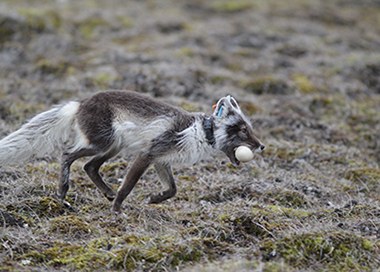
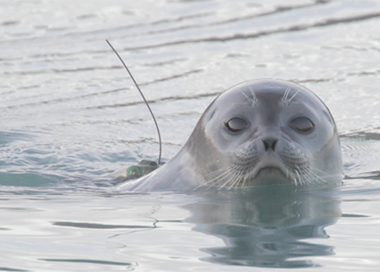
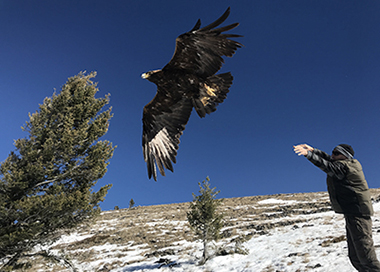
June 2020 site updates
Greetings Movebank users! You may notice some new changes to the site that we are releasing today. Here's what you can expect from our latest update:
- The Studies menu: We have streamlined the menu on the Studies Page. The Event Editor has been moved to the "Manage" tab along with the Deployment Manager, and the "Add" tab has been removed (read more below).
Take the survey to join the COVID19 Bio-Logging Initiative
In this time of human tragedy and hardship, we are hearing stories of animals responding to changes in human activity, as regions around the world take unprecedented actions to control the spread of the caronavirus. But do these stories reflect real changes, and how do they vary by species and region? Animal tracking offers an opportunity to measure how our lockdowns, working from home, or newfound interest in outdoor spaces are affecting wildlife.
Researchers manage hundreds of studies in Movebank for ongoing projects that have been recording information on animal movements and behavior since the Covid-19 pandemic began. Because these data are still being collected, most are not public, but it is easy for the owners to share them with other scientists after agreeing on terms of use. To help connect those with data and expertise to investigate the impacts of humanity's coronavirus response on wildlife, Movebank is joining a collaborative global project, the COVID19 Bio-Logging Initiative, led by the International Bio-Logging Society.
Introducing a new look, policies and features for 2020
Dear Movebank users,
We are pleased to announce several exciting changes at Movebank. In addition to a new design, we have created new guidelines and sharing options to give data owners more flexibility, support programs relying on Movebank for broad-scale conservation efforts, and further our mission to serve as a global archive for animal movement.
New training tools for Movebank, EnvDATA and R
At the beginning of May we held a two-day NSF-sponsored workshop in Scotland, where over 30 movement ecologists networked and learned about movement modeling, analysis and mapping in R. We focused on how to do this using animal tracking data in Movebank and environmental covariates from EnvDATA, a tool on Movebank to access global remote sensing and weather model data products, along with the amt, move and moveVis R packages.
Want to try creating your own RFS and SSF models or tracking animations in R? The scripts and files from this workshop, along with materials from our 2018 workshop in North Carolina, are posted at https://movebankworkshopraleighnc.netlify.com.
New global ocean currents and land cover products in EnvDATA
We've just added access to two more global products through Movebank's Environmental Data Automated Track Annotation System (EnvDATA):
- OSCAR ocean surface currents: global near-surface ocean currents at 1/3-degree, 5-day resolution going back to 1993.
January 2019 Newsletter
Dear Movebank users,
We hope your year has gotten off to a good start! Things haven't slowed down at Movebank, with more than 3,000 new users and almost double the number of animal locations from this time a year ago. Twenty one thousand users now manage over 5,500 studies containing 1.2 billion locations and 1.7 billion measurements from other on-animal sensors describing the movements and behavior of 850 animal taxa.
Short course this spring on using Movebank, EnvDATA and R
We will be hosting an NSF-funded short course on analyzing animal tracking data with Movebank, Env-DATA and R from 30 April to 2 May at the Scottish Centre for Ecology and the Natural Environment (SCENE), part of the University of Glasgow. This two-day, hands on course covers how to annotate environmental data to animal tracks, how to define and annotate records related to those tracks, how to visualize annotated results, and how to calculate movement characteristics and build resource and step-selection models incorporating the results, all using free tools.
To apply, please fill out this short form. Application deadline is 1 March 2019. For questions, contact Roland Kays at rwkays@ncsu.edu.
New Tools for the Env-DATA System
Several new tools, on and off of Movebank, are now available for Movebank's Environmental Data Automated Track Annotation System System (Env-DATA).
Link environmental data to more than just animal tracks: There is a new interface in Movebank to request annotations for generic time-location records—for example, over a breeding period or simulated migration—and gridded rasters—for example, across an entire study site. Read more here.
News from the Movebank Data Repository
The Movebank Data Repository, Movebank's long-term archive for published data, recently released its 100th dataset! These curated publications include 44 million locations and describe nearly 5,000 animals and 98 species—data that underly 135 published analyses in 55 journals by 381 authors. In other news,
- The repository is now on Scientific Data's list of recommended repositories, which is used by Springer Nature and BioMedCentral journals, including Nature.
EnvDATA updates: New vegetation and ocean products from MODIS and VIIRS now online
To continue to access global remote sensing data in the Env-DATA System we are adding some new products:
MODIS Land V6 NDVI products are now available. Data files for MODIS Land V5 products, which we have accessed since 2013, are no longer available from the Land Processes Distributed Active Archive Center (LP DAAC). We are now connecting to MODIS Land V6, and have just released all of the V6 vegetation index products:
January 2018 Newsletter
Dear Movebank users,
We want to start off the new year by sharing some of what happened at Movebank during 2017. We saw continued growth as well as examples of valuable insights that can be gained through the sharing and re-use of animal movement data. Movebank now contains over 600 million animal locations and over 1.1 billion measurements from non-location sensors such as acceleration bursts and light levels from geolocators. Data are stored in nearly 4,200 studies and represent movements of 756 taxa all over the world—these studies are managed and owned by over 5,000 people, many of whom have new information coming in daily from over 800 active data feeds.
Env-DATA downtime continued until January 18
We are currently updating to new hardware. As a result the Env-DATA System will be offline starting 10 Jan and will likely remain offline until 18 Jan. Please contact support@movebank.org with questions.
One hour downtime scheduled for Friday, Nov 3
Movebank will be offline for scheduled maintenance on Friday, Nov 3 at 8:00–9:00 CET. Please contact support@movebank.org with any questions.
Env-DATA updates: ECMWF back and new MODIS Land products
ECMWF variables are back, and the following MODIS Land products are also now active in Env-DATA:
ECMWF and TRMM currently unavailable in Env-DATA
The ECMWF weather reanalysis and Tropical Rainfall Measuring Mission (TRMM) data products are temporarily unavailable for annotation requests through the Env-DATA System. In both cases, updates to our system are needed so that we can continue to access files from these sources to complete requests.
If you have current requests for these products that you haven't yet received, please be patient while we complete this work—and if there are other products included in these requests, you can resubmit those and the results should come through quickly.
New feed to Followit Tellus collars and new options in the Event Editor
Just released additions on the site!
- Live data feeds are now available for Followit Wildlife Tellus GPS collars.
Reprocessed MODIS Ocean now available in Env-DATA
The MODIS Ocean products in Env-DATA have been updated to access the 2014.0 reprocessed mapped Aqua and Terra data now provided by MODIS Ocean (see here). Details about this reprocessing are available here (Aqua) and here (Terra). The older data products are no longer available from the provider or Env-DATA.
To identify whether the results of an Env-DATA request are based on the old or new MODIS Ocean products, see the service information in readme file that you received with your results, under "Environmental data services". For requests calculated using the reprocessed data, the URL under "source link" will include "MODIS-Terra" or "MODIS-Aqua". Contact support@movebank.org with questions or for information on differences between the old and new data values that we found while testing the new products.
Take the Movebank User Survey by February 12!
How has Movebank helped you? The Max Planck Institute for Ornithology, which hosts Movebank and is its primary source of funding for maintenance and development, could use your feedback. Please take our short survey about how you use Movebank and what new features you would most like to see (it should take less than 5 minutes to complete). We will be reviewing the results soon so complete the survey by February 12.
January 2016 Newsletter
Dear Movebank users,
We begin the new year in the midst of continued growth and new beginnings, and with a request for feedback. Researchers are currently using Movebank to store nearly 250 million animal locations in over 2,200 user-created studies. Movebank's growth (see charts below) reflects both an increase in users and an increasing number of high-resolution tags recording animal movements around the world.
Help BirdLife Malta protect migrating birds from illegal hunting!
A request from BirdLife Malta: The Maltese islands are infamous for illegal hunting, and when rare species get to the islands BirdLife Malta is in the field to ensure constant protection. This autumn we have guarded, among others, an Egyptian Vulture nicknamed Tobia, who was released in Italy, and nine storks from a Swedish breeding programme. Obviously, the use of tracking technology can make this work a lot more effective, and we would like to ask projects and organisations tagging birds that might migrate over Malta to get in touch with us. We wish to establish an open line of communications, so that when tracked birds are flying towards Malta, we can be informed and prepare for their arrival.
If you think the birds you are working with might fly over Malta during the next migration, get in touch with Nick Piludu, Conservation Officer, at nick.piludu@birdlifemalta.org, to discuss how to best protect them from wildlife crime.
Corrected calculations for vertical interpolation in Env-DATA
We have made a correction to the way we calculate vertical interpolations in Env-DATA. Vertical interpolation is available as an option for select variables in the weather models (ECMWF, NARR, and NCEP-DOE Reanalysis 2) when the tracking data contain information about the animal’s height in the attribute “height above ellipsoid” or "height above msl".
Background: The height of an animal or an estimate of wind speed can be given as the height above geoid (height above mean sea level) or the height above ellipsoid (a smooth surface approximating the geoid). We previously assumed that the geopotential values provided in the weather models gave a height above ellipsoid when divided by 9.80665. However, we recently discovered that this calculation actually provides the height above the geoid. In our corrected calculation, we now convert the animals’ “height above ellipsoid” values to the “height above msl”, and use these values for vertical interpolation.
Weather model variables temporarily unavailable in Env-DATA
The NCEP-DOE Reanalysis 2 and NARR variables are currently unavailable in Env-DATA. The providers have moved the online locations of these products, and we need to update our system to access the new locations.
We expect these products to be available again by the beginning of March.
Our September 2014 Newsletter
Dear Movebank users,
Movebank is continuing to grow, with 287 new studies and nearly 40 million new animal locations just since the beginning of this year. We have been hard at work on new site features, public outreach projects, and resources for data management and collaboration.
The Animal Tracker App from Movebank is out!
We've just released the beta Animal Tracker app for Android, iPhone and iPad. Now you can "follow" animals as their locations are updated in near-real time and even contribute images of the animals or their habitat if you are in the area. Read more about it or watch this introduction on YouTube!
New live feeds for PTTs and GSM tags!
We are now offering automated data feeds for several new tag types:
- Argos PTTs from North Star/GeoTrak
Our January 2014 Newsletter
Dear Movebank users,
As we begin the new year, we have several accomplishments to report. Movebank grew steadily throughout 2013, and the year ended with over 1,000 user-created studies (growth of 50 percent), 350 taxa (growth of 40 percent), and more than 61 million unique animal locations (growth of 70 percent). As you'll see below, we're continuing to add and improve ways to help researchers, educators, and the public better understand and communicate about animal tracking data.
Symposium on Animal Movement and the Environment
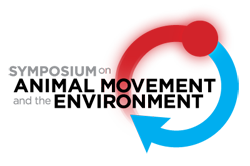
As part of the NASA-funded Env-DATA project, the Symposium on Animal Movement and the Environment will be held 5–7 May 2014 at the North Carolina Museum of Natural Sciences in Raleigh, North Carolina. The symposium will include hands-on tutorials in addition to talk and poster sessions, as well as the option of hosting a collaborative workshop following the meeting using space at the museum. If you would like in-person help using Movebank, the Movebank Cafe will be running throughout the meeting to offer demonstrations and answer questions.
New Env-DATA products and other site updates
We are happy to announce that several new products are now available through the Env-DATA Track Annotation Service:
- Human population density (GPW and GRUMP data products) from Columbia University and the NASA Socioeconomic Data and Applications Center (SEDAC)
US government shutdown preventing access to environmental data used by Env-DATA
Websites for many US government agencies that Movebank's Env-DATA System accesses to download environmental data are now offline as a result of the US government shutdown that began this morning. This means that some annotation requests will not be completed until the shutdown has ended and the websites come back online.
Please contact us at support@movebank.org with any questions.
Movebank migrations featured by National Geographic
National Geographic's Education website has just released a GeoStory on Tracking Animal Migrations. Through maps, words, and photographs, the GeoStory tells the stories of nine animals around the world whose movements are stored on Movebank. We invite you to check it out!
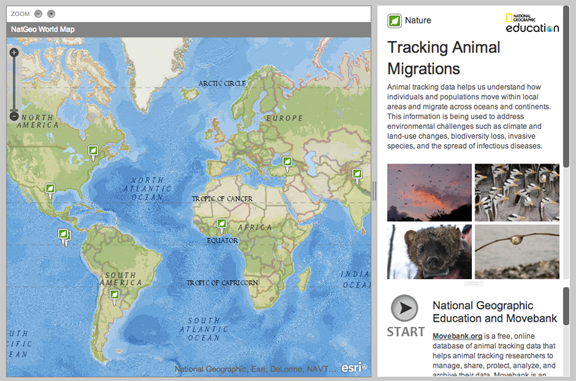
Migratory Burchell's zebra in northern Botswana
In 1968, a fence was constructed in northern Botswana to keep domestic livestock safe from wild predators. For zebras living at the Okavango Delta, this was an unfortunate development, because the fence blocked their access to the Makgadikgadi grasslands, where they went every year at the start of the rainy season in spring to spend the summer foraging on protein- and nutrient-rich grasses. For 36 years, the zebras could not make this migration. In 2004, the fence was removed, and within three years the zebras were again making their annual migration between the Okavango and the Makgadikgadi.
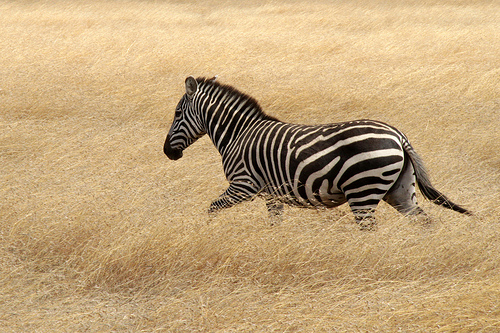
Opportunities to meet with Movebank
We will be attending several meetings in the US in the next few months. If you will be in the area and would like some in-person help using Movebank or the new Env-DATA System, contact support@movebank.org. Hope to meet some of you in the Midwest!
August 4–9: Ecological Society of America, Minneapolis MN
New Env-DATA System launched!
Today we are launching a new tool on Movebank to allow researchers and the public to link animal tracking data with information about the environment—like weather, habitat, elevation, and land use—from global environmental datasets. Check out the new Env-DATA link on the main menu to learn more about our new track annotation tool.
This release coincides with the publication of a paper describing the Env-DATA System in a new journal called Movement Ecology. The paper is publicly available here.
Movebank as a source of global biodiversity information for conservation
Researchers at the University of Cambridge Department of Zoology have published a new study on challenges to collecting information for global biodiversity conservation. For the study, they looked at four large databases that collect information about species occurence and are available to the public—the Global Biodiversity Information Facility, the Global Population Dynamics Database, the European Union for Bird Ringing Databank, and Movebank.
They found that in all cases, the amount of available information is greater for countries that are wealthy, have larger numbers of people who speak English, are more secure (as measured by the Global Peace Index), and that are near the country hosting the database. This means the number of animal observations in a country reflects these factors rather than biological productivity or biodiversity. Based on these findings, the authors recommend promoting education and collaboration in countries that do not meet these criteria.
Our February 2013 Newsletter
Dear Movebank users,
There's been a lot going on the past several months, and it's about time we sent an update!
HUJ MoveEcol Lab Israel: Egyptian fruit bat Rousettus aegyptiacus
Little is known about how mammals navigate long distances in the wild. Do they memorize paths, follow smells or magnetic signals, or do they use multiple sources of information to create an internal map of their surroundings? Our current featured study investigates how Egyptian fruit bats (Rousettus aegyptiacus) navigate in the wild. Using a combination of miniature GPS data loggers and radio transmitters, Dr. Asaf Tsoar and his colleagues at the Hebrew University of Jerusalem were able to document detailed movements of 36 fruit bats, conducting several experiments to test how these animals navigate in familiar and unfamiliar environments.
Tracking individual animals offers a unique method for testing hypotheses about animal navigation. In the lab, researchers can conduct controlled experiments in a restricted area. But for species that travel long distances, a confined laboratory or field site might not properly replicate the animals' true habitat. Documenting their movements by GPS, in contrast, allows collection of high-resolution data showing where the animals travel in the wild after being released.
Swainson's Hawks
The featured study "Swainson's Hawks" is a great example of the value of satellite tracking studies and of collaboration and data-sharing between scientists. This study, led by Michael Kochert, emeritus scientist with the U.S. Geological Survey, shows the movements of 43 Swainson's hawks during part or all of their annual migration from western North America to Argentina and back.
Why track animals with satellite tags? Tracking animals using satellite tags has allowed us to better understand the year-round movements of many species, including bird species who migrate long distances every year between breeding grounds in the north and non-breeding grounds in the south. Since the advent of satellite tracking technology, our knowledge of where these animals go when they leave their breeding areas—often to places where ringing recaptures and recorded observations are rare—has increased dramatically. However, there are also challenges to studying animals using these technologies. The tags are expensive and can only be used on animals large enough to safely carry the tags, and animals must be captured in the wild so that the tags can be attached. For these reasons, researchers can only use satellite tracking methods for certain species, and often only have resources to collect data for a small number of animals, whose movements may not be representative of a whole population or species.
